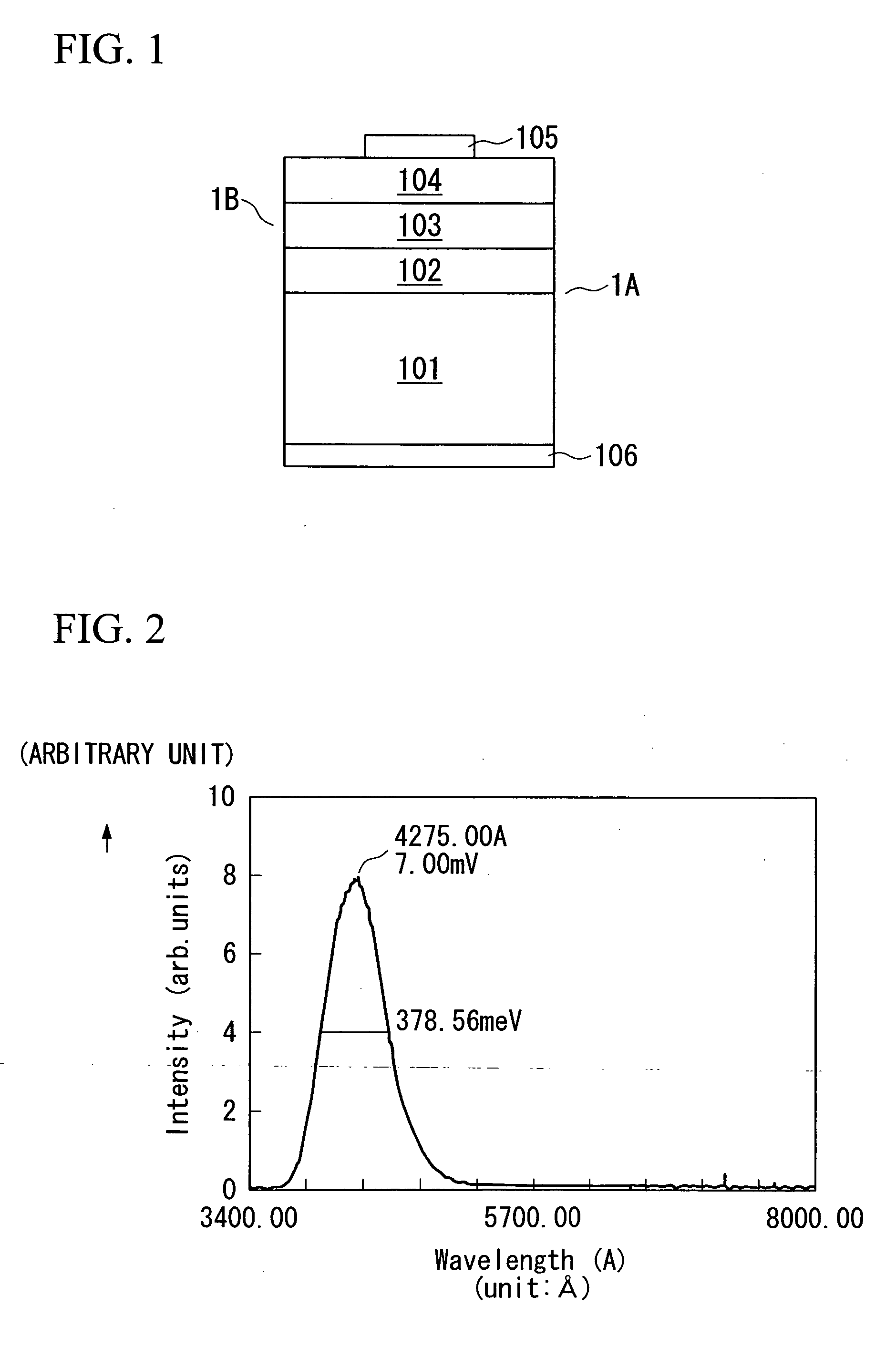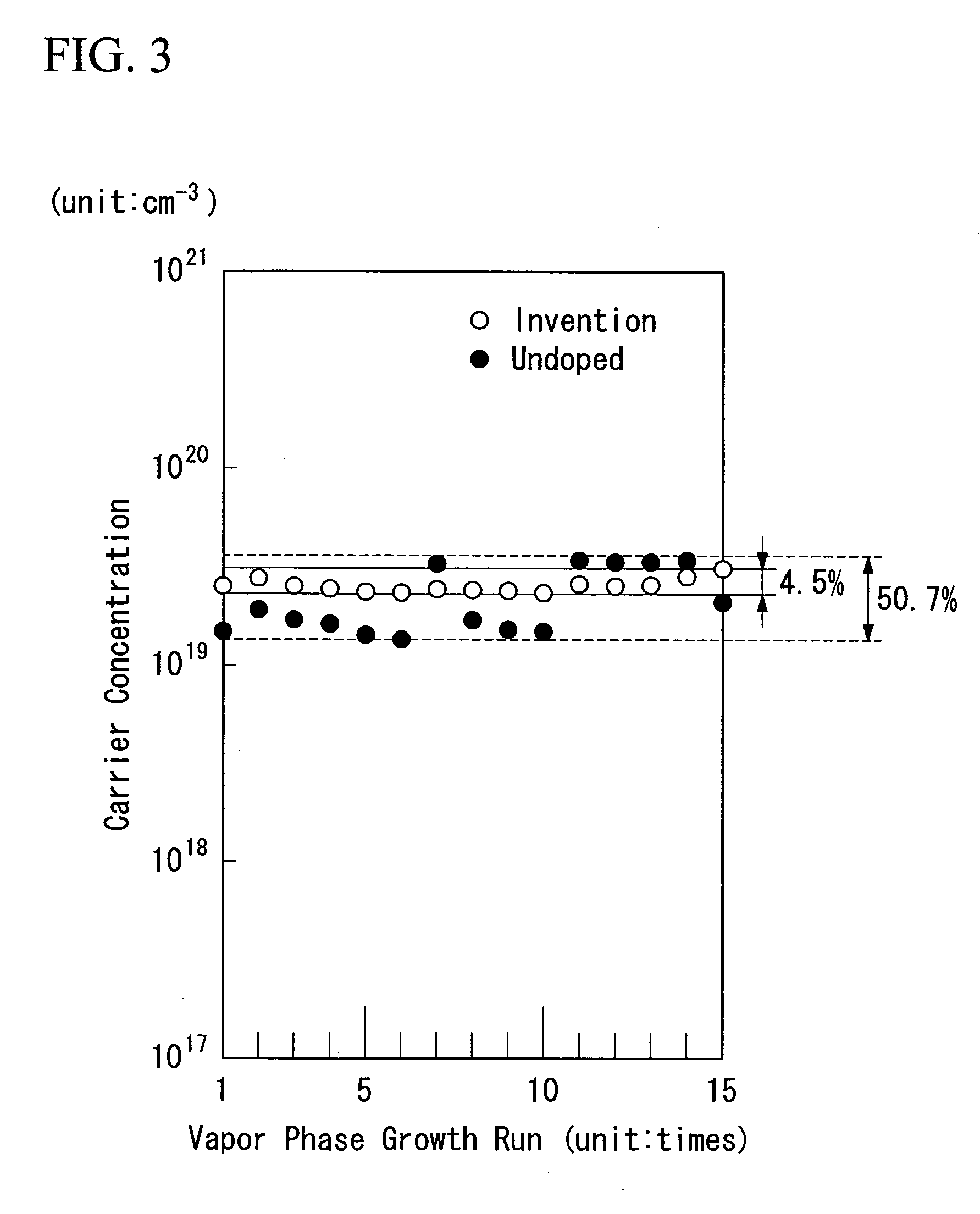Boron phosphide-based semiconductor device and production method thereof
a technology of boron phosphide and semiconductors, which is applied in the direction of polycrystalline material growth, natural mineral layered products, crystal growth process, etc., can solve the problems of unclarified boron vacancy and the p-type conduction of the bp layer not always stably obtained, so as to increase the amount of donor-related anti-site defects and achieve stably obtained
- Summary
- Abstract
- Description
- Claims
- Application Information
AI Technical Summary
Benefits of technology
Problems solved by technology
Method used
Image
Examples
Embodiment Construction
[0042] The present invention is specifically described below by referring to the case where a boron phosphide-based semiconductor light-emitting diode (LED) is fabricated by utilizing p-type and n-type boron phosphide (BP) semiconductor layers provided on a silicon single crystal substrate.
[0043] FIG. 1 is a view schematically showing the cross section of LED 1B according to this Example. For the single crystal substrate 101, a boron (B)-doped p-type silicon single crystal with the (111) crystal plane surface was used. On the substrate 101 surface, a lower clad layer 102 composed of a zinc (Zn)-doped (111) p-type boron phosphide (BP) was formed at 1,050.degree. C. by an atmospheric pressure MOCVD method using a triethylborane ((C.sub.2H.sub.5).sub.3B) / phosphine (PH.sub.3) / hydrogen (H.sub.2) system. At the formation, the V / III ratio (.dbd.PH.sub.3 / (C.sub.2H.sub.5).sub.3B feed ratio) was set to about 115. By the analysis using a laser Raman spectroscopic method or the like, the concen...
PUM
| Property | Measurement | Unit |
|---|---|---|
| Angle | aaaaa | aaaaa |
| Angle | aaaaa | aaaaa |
| Temperature | aaaaa | aaaaa |
Abstract
Description
Claims
Application Information
 Login to View More
Login to View More - R&D
- Intellectual Property
- Life Sciences
- Materials
- Tech Scout
- Unparalleled Data Quality
- Higher Quality Content
- 60% Fewer Hallucinations
Browse by: Latest US Patents, China's latest patents, Technical Efficacy Thesaurus, Application Domain, Technology Topic, Popular Technical Reports.
© 2025 PatSnap. All rights reserved.Legal|Privacy policy|Modern Slavery Act Transparency Statement|Sitemap|About US| Contact US: help@patsnap.com



